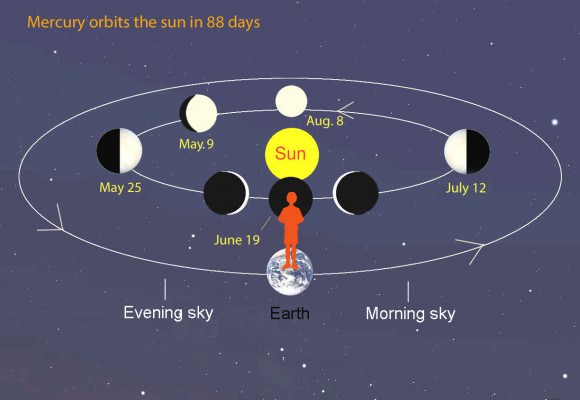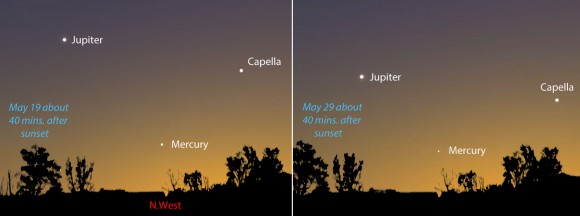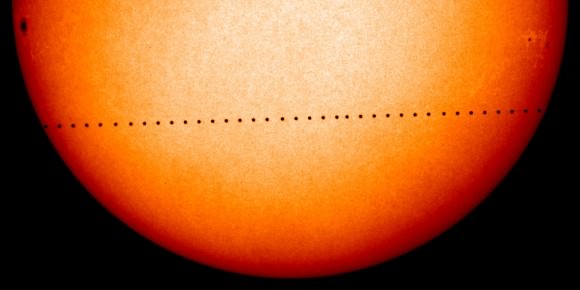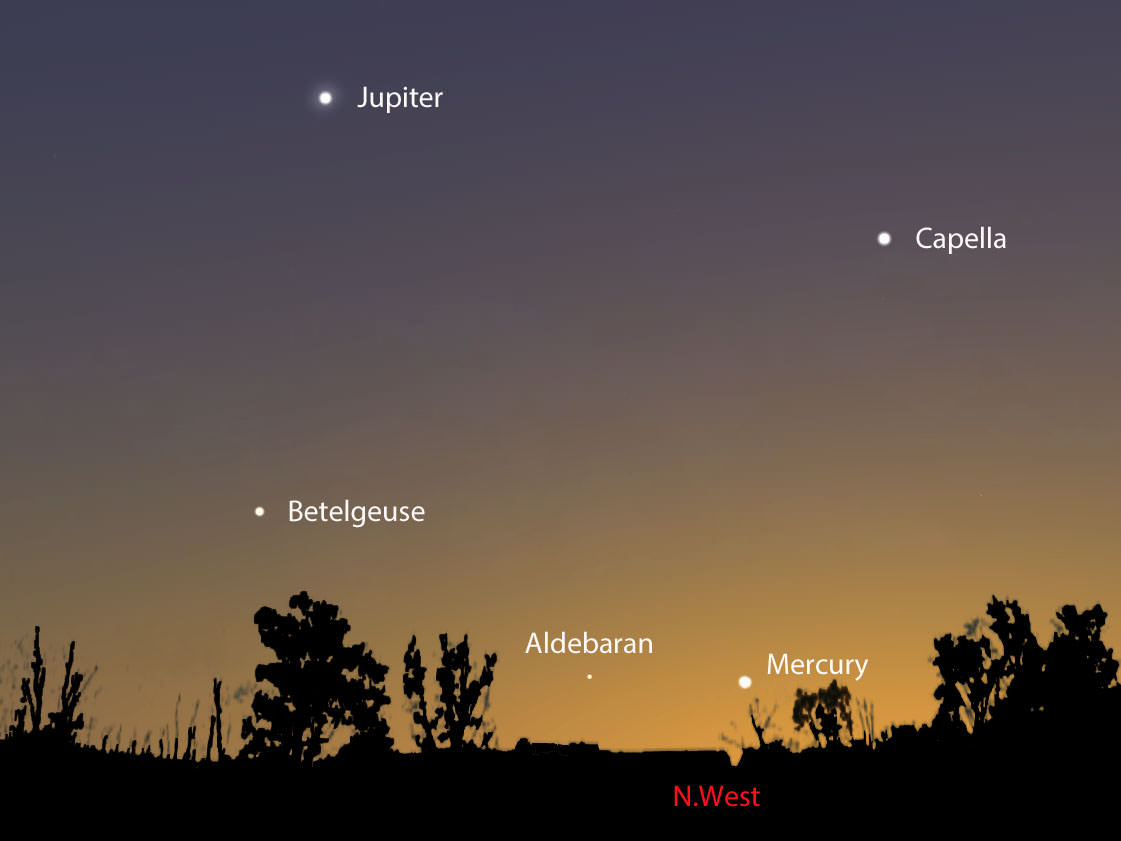Don’t let furtive Mercury slip through your fingers this spring. The next two and a half weeks will be the best time this year for observers north of the tropics to spot the sun-hugging planet. If you’ve never seen Mercury, you might be surprised how bright it can be. This is especially true early in its apparition when the planet looks like a miniature ‘full moon’.

Both Venus and Mercury pass through phases identical to those of the moon. When between us and the sun, Mercury’s a thin crescent, when off to one side, a ‘half-moon’ and when on the far side of the sun, a full moon. This apparition of the planet is excellent because Mercury’s path it steeply tilted to the horizon in mid-spring.
We start the weekend with Mercury nearly full and brighter than the star Arcturus. Twilight tempers its radiance, but :
* Find a location with a wide open view to the northwest as far down to the horizon as possible.
* Click HERE to get your sunset time and begin looking for the planet about 30-40 minutes after sunset in the direction of the sunset afterglow.
* Reach your arm out to the northwestern horizon and look a little more than one vertically-held fist (10-12 degrees) above it for a singular, star-like object. Found it? Congratulations – that’s Mercury!
* No luck? Start with binoculars instead and sweep the bright sunset glow until you find Mercury. Once you know exactly where to look, lower the binoculars from your eyes and you should see the planet without optical aid. And before I forget – be sure to focus the binoculars on a distant object like a cloud or the moon before beginning your sweeps. I guarantee you won’t find Mercury if it’s out of focus.
Through a telescope, Mercury looks like a gibbous moon right now but its phase will lessen as it moves farther to the ‘left’ or east of the sun. Greatest eastern elongation happens on May 24. On and around that date the planet will be farthest from the sun, standing 12-14 degrees high 40 minutes after sundown from most mid-northern locales.

The planet fades in late May and become difficult to see by early June. Inferior conjunction, when Mercury passes between the Earth and sun, occurs on June 19. Unlike Venus, which remains brilliant right up through its crescent phase, Mercury loses so much reflective surface area as a crescent that it fades to magnitude +3. Its greater distance from Earth, lack of reflective clouds and smaller size can’t compete with closer, brighter and bigger Venus.

Mercury’s 7-degree inclined orbit means it typically glides well above or below the sun’s disk at inferior conjunction. But anywhere from 3 up to 13 years in either November or May the planet passes directly between the Earth and sun at inferior conjunction and we witness a transit. This last happened for U.S. observers on Nov. 8, 2006; the next transit occurs exactly two years from today on May 9, 2016. That event will be widely visible across the Americas, Western Europe and Africa. After having so much fun watching the June 2012 transit of Venus I can’t wait.


STEREO-B 29/04/2014
http://youtu.be/J_qlsOIVsCk
What is that “… youtu.be …”?
Looks too much like a bad place to pick up a virus.
IS IT A LEGITIMATE POST???
There’s video walkthrough of mercury (assumed to be-I’m not exactly sure) on the disk of the Sun at 29.04.2014. If not, then: http://www.youtube.com/watch?v=J_qlsOIVsCk this is my page-no viruses